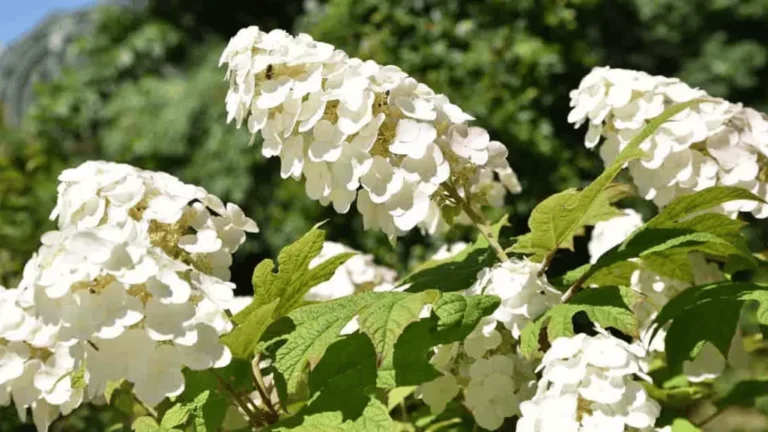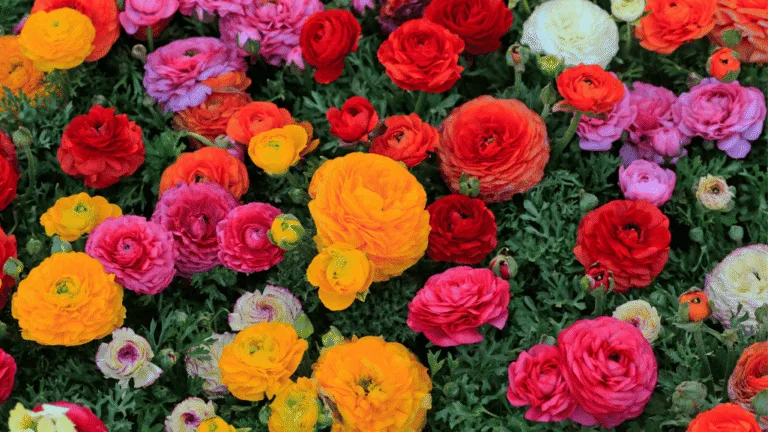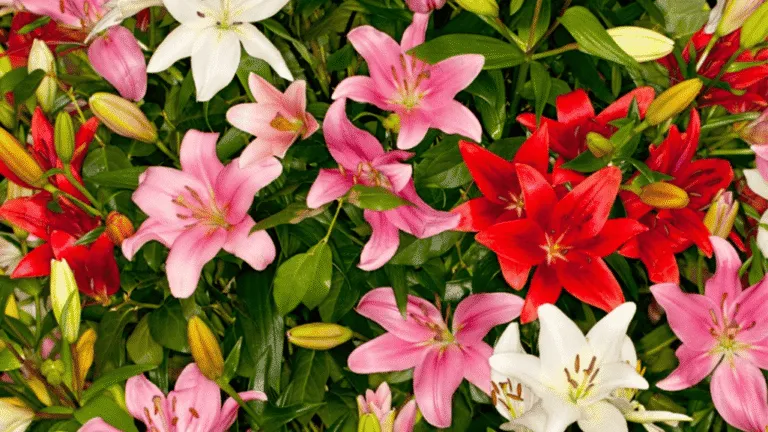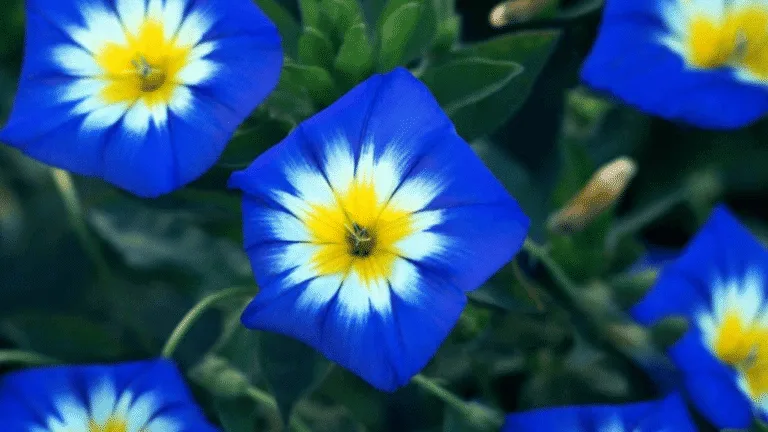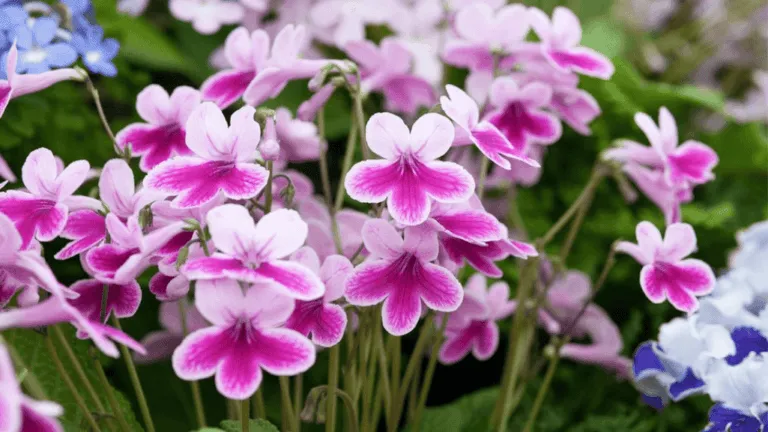Beautiful flowers gardenia Plants For Your homes

Turn your yard into a lively oasis with beautiful backyard flowers. Learn how to grow vibrant, easy-to-care-for blooms that draw in pollinators and make your outdoor area better. Create a private spot in your backyard that’s your own garden oasis for unwinding. Use dense plants to block out views and add a sweet scent.
When gardening with flowers, pick plants that fit your area and what you want. Think about your USDA hardiness zone and soil type to find native wildflowers and perennials that will do well. With the right plants, you can have a beautiful pollinator garden with lots of greenery and flowers. Plus, it will be easy to take care of.
Whether you’re a seasoned gardener or new to it, making a backyard oasis with flowers is a great way to enjoy nature and make your home look better. Get ready to explore the world of backyard flower gardening and watch your outdoor space come to life!
Key Takeaways
- Transform your yard into a vibrant oasis with beautiful backyard flowers
- Create a secluded, private garden oasis using dense flowering plants for privacy
- Choose native wildflowers and perennial blooms suited to your hardiness zone and soil type
- Attract pollinators with a diverse selection of flowering ornamental plants
- Enjoy a stunning, low-maintenance landscape filled with colorful blooms
Creating a Secluded Backyard Oasis with Flowering Plants
Turning your backyard into a private, blooming oasis is possible with the right plants and design. Choose privacy plants that fit your USDA hardiness zone and soil type. This way, you can make a stunning, secluded garden that improves your outdoor space and mental health.
Choosing the Right Plants for Privacy and Beauty
When picking flowering privacy shrubs, look for plants with dense foliage for privacy and beautiful blooms. Some great options are:
- Cherry Laurel (Prunus laurocerasus)
- Camellia (Camellia japonica)
- Lilac (Syringa vulgaris)
These shrubs offer coverage all year or in seasons, with stunning flowers in different colors.
Considering USDA Hardiness Zones and Soil Type
It’s important to pick plants that match your USDA hardiness zone for your backyard oasis. This helps ensure your plants can handle your area’s winter temperatures. Also, think about your soil type. Some plants need moist, well-drained soil, while others are more flexible.
“Investing time in understanding your garden’s unique growing conditions is the key to creating a thriving, secluded oasis.”
Deciding Between Fast-Growing and Year-Round Coverage
When planning your backyard oasis, choose between fast-growing shrubs for quick privacy or evergreen shrubs for year-round coverage. Fast-growing shrubs offer fast privacy, while evergreen shrubs provide constant privacy.
| Plant Type | Growth Rate | Coverage |
|---|---|---|
| Fast-Growing Deciduous Shrubs | Quick | Seasonal |
| Evergreen Shrubs | Moderate to Slow | Year-Round |
Using a mix of fast-growing and evergreen plants creates a backyard oasis with both immediate and long-term privacy. Remember, caring for your garden is key. Regular watering, fertilizing, and maintenance help your plants stay healthy and beautiful.
Top Flowering Shrubs for Privacy Screens
Flowering shrubs are great for making your backyard private and pretty. They block out the view and add color and greenery. Here are some top picks for privacy screens in your garden.
Cherry Laurel (Prunus laurocerasus)
Cherry laurel is a fast-growing evergreen shrub. It grows up to 30 feet tall, making a great privacy screen. Its glossy leaves and white flowers in spring add beauty and function to your garden. It does well in USDA zones 7-10.
Camellia (Camellia japonica)
Camellia is an evergreen shrub that screens well and blooms beautifully. It can grow up to 12 feet tall, with glossy leaves all year. Its big flowers come in pink, red, and white, adding color in cooler months. It thrives in USDA zones 6-9.
Lilac (Syringa vulgaris)
Lilac is a favorite for its privacy and fragrance. It grows 10-16 feet tall, making a big screen in the growing season. In spring, it blooms with purple, pink, or white flowers, attracting butterflies and hummingbirds. It’s best for USDA zones 3-7.
| Shrub | Height | USDA Zones | Evergreen/Deciduous |
|---|---|---|---|
| Cherry Laurel | 20-30 feet | 7-10 | Evergreen |
| Camellia | 10-12 feet | 6-9 | Evergreen |
| Lilac | 10-16 feet | 3-7 | Deciduous |
When picking shrubs for privacy, think about their height, needs, and your zone. Mixing evergreen and deciduous shrubs gives year-round coverage and seasonal interest. This keeps your backyard private and pretty all year.
Stunning Flowering Vines for Backyard Oases
Flowering vines are perfect for creating a lush backyard oasis. They offer privacy, add color, and fragrance. In warm climates, bougainvillea and climbing roses are top choices. They can turn your garden into a stunning retreat.
Bougainvillea (Bougainvillea spp.)
Bougainvillea is a standout vine for warm climates, especially in USDA zones 9 through 11. It can grow up to 40 feet tall with the right care. It produces vibrant, papery bracts in many colors all year.
Plant bougainvillea in a sunny spot with well-draining soil. It’s drought-tolerant but needs regular watering. Pruning keeps it looking good and encourages more blooms. It’s great for privacy screens, trellises, and containers, adding a tropical feel.
Climbing Roses (Rosa spp.)
Climbing roses add a classic, romantic touch to your garden. They come in many colors and sizes, fitting various climates and styles. With support, they create stunning displays of blooms and foliage.
Some top climbing rose varieties include:
- ‘New Dawn’: A reliable climber with soft pink, fragrant flowers that bloom all season.
- ‘Joseph’s Coat’: A rose with vibrant, multi-colored blooms from yellow to red.
- ‘Zephirine Drouhin’: A thornless, shade-tolerant variety with deep pink, sweetly scented flowers.
To keep climbing roses healthy, plant them in well-draining soil with organic matter. Regular watering and fertilization are key. Annual pruning is essential for their growth and blooms. With care, they can make your backyard a fragrant, stunning oasis.
| Flowering Vine | Height | Width | USDA Zones |
|---|---|---|---|
| Bougainvillea | Up to 40 feet | Varies | 9-11 |
| ‘Oxford Girl’ Rose | 10 feet | 4 feet | Varies |
| Climbing Hydrangea | 30-50 feet | 6-7 feet | 4-8 |
| Clematis ‘Tekla Garland’ | 5 feet | 2 feet | Varies |
Perennial Backyard Flowers for Seasonal Interest
Adding perennial flowers to your backyard is a smart move for year-round beauty. These plants come back every year, offering a variety of colors, textures, and shapes. When picking perennial flowers, think about when they bloom, how they grow, and what they like in the environment. This way, you can make a garden that looks great and is easy to care for.
Oakleaf Hydrangea (Hydrangea quercifolia)
Oakleaf hydrangea is a beautiful native plant that attracts pollinators. It has big, cone-shaped white flowers that turn pink and bronze as they get older. The leaves look like oak leaves and turn red and purple in the fall.
This plant likes partial shade and well-drained soil. It’s a great choice for many garden types.
Hardy Hibiscus (Hibiscus moscheutos)
Hardy hibiscus adds a bold, tropical look to your garden. It has big, showy flowers in pink, red, and white, up to 12 inches wide. It blooms from mid-summer to fall, adding beauty when other flowers stop.
As a native plant, it fits well in local gardens. It also attracts hummingbirds and butterflies.
Perennials take about 1 to 2 years to establish a regular blooming schedule. During initial growth, blooming occurs for less than four weeks, increasing to a full season after the third year.
Coneflowers (Echinacea spp.)
Coneflowers are essential for any garden that attracts pollinators. They come in many colors, like purple, pink, orange, and yellow. Their flowers bloom from summer to fall, attracting bees, butterflies, and other insects.
They’re good at handling drought and love full sun. They’re perfect for sunny spots or naturalized areas.
When planning your garden, mix plants with different bloom times and growth habits. This way, your garden will always have something beautiful to look at. Choose native plants like oakleaf hydrangea, hardy hibiscus, and coneflowers. They make a beautiful, easy-to-care-for, and pollinator-friendly garden that will bring joy for years.
| Perennial | Bloom Time | Sun Exposure | Hardiness Zones |
|---|---|---|---|
| Oakleaf Hydrangea | Late Spring to Summer | Partial Shade | 5-9 |
| Hardy Hibiscus | Mid-Summer to Fall | Full Sun to Partial Shade | 4-9 |
| Coneflowers | Summer to Fall | Full Sun | 3-9 |
Creating a Foliage-First Garden Design
Think about using a foliage-first approach for your garden design. This means focusing on plants with different textures, bright leaf colors, and unique shapes. It makes your outdoor space both beautiful and lasting. Foliage-first gardens are interesting all year, even when flowers are gone.
To make your garden look good and feel alive, place plants carefully. Use plants like Japanese forest grass to guide the eye along paths. Meanwhile, plants like butterbur can be eye-catching highlights. The mix of different foliage adds depth and makes you want to explore.
“Gardening with Foliage First: 127 Dazzling Combinations” is a great guide for foliage-first gardens. It’s a 340-page book with over 100 plant mixes. It helps you choose based on sun or shade and the best seasons.
When picking plants for your garden, think about a few things:
- Texture: Mix plants with different leaf textures for interest and feel.
- Color: Use a range of leaf colors to add contrast and depth.
- Shape: Choose plants with various leaf shapes to keep your garden interesting.
| Foliage Plant | Texture | Color | Shape |
|---|---|---|---|
| Japanese Forest Grass | Fine | Green, Variegated | Narrow, Arching |
| Butterbur | Bold | Green | Large, Round |
| Heuchera | Medium | Purple, Burgundy, Chartreuse | Rounded, Lobed |
By focusing on foliage, you can make a garden that’s beautiful all year. With the right plants and where you put them, your garden will be a special place. It shows how foliage can make a garden truly stand out.
Incorporating Flowers for Seasonal Pops of Color
A well-designed backyard oasis needs lush foliage. But adding seasonal flowers brings vibrant colors and attracts pollinators all year. By picking blooms for each season, your garden will change and delight.
Spring Blooms: Witch Hazel and Fothergilla
When spring comes, witch hazel and fothergilla shine. Witch hazel’s unique, spidery flowers in yellow, orange, and red stand out. Fothergilla’s bottlebrush flowers and vibrant fall leaves add a light touch to your garden.
Summer Stunners: Martagon Lilies and Hydrangeas
In summer, martagon lilies and hydrangeas are the stars. Martagon lilies have elegant, downward-facing flowers in pink, white, and purple. Hydrangeas come in many colors and forms, lasting long and drawing eyes and pollinators.
| Flower | Bloom Time | Colors | Hardiness Zones |
|---|---|---|---|
| Martagon Lilies | Early to Mid-Summer | Pink, White, Purple | 3-8 |
| Hydrangeas | Mid-Summer to Fall | Pink, Blue, Purple, White | 3-9 |
Fall Favorites: Asters and Chrysanthemums
In fall, asters and chrysanthemums lead the way. They offer nectar for pollinators and color before winter. Asters’ star-like flowers in purple, pink, and white match autumn leaves. Chrysanthemums, in many colors and forms, make a bold display until the first frost.
By using a variety of seasonal flowers, your backyard oasis will change all year. It will offer a colorful, textured, and interesting landscape.
Dealing with Root Competition in Shaded Gardens
Creating a garden under mature trees can be tough. The secret to success is choosing the right plants for shaded gardens with deep roots.
Opt for shade-loving perennials that do well in dry spots. These plants are great at fighting tree roots for water and nutrients. Some top picks include:
- Hellebores
- Solomon’s Seal
- European Ginger
- Hostas
- Woodland Phlox
- Tiarellas
- Bleeding Hearts
- Cimicifuga
- Epimedium
Using containers can also help. They give plants a better spot to grow, away from tree roots. This way, plants get more water and nutrients.
Native mosses are another great choice. They grow well in spots where nothing else will. Mosses need little care and love the light and moisture from trees.
Embrace the naturalistic aesthetic created by the interplay of mosses, ferns, and other shade-tolerant plants beneath the majestic canopy of a mature tree.
For ground covers, think about these:
- Geranium cantabrigiense ‘Biokovo’
- Ajuga
- Epimediums
- Satureja douglasii
- Rubus pentalobus
Drought-tolerant ferns like Western Sword Fern add height and texture. Grasses like Deschampsia cespitosa (Tufted Hairgrass) are also good for around tree roots.
| Plant Type | Examples | Characteristics |
|---|---|---|
| Shade-Loving Perennials | Hellebores, Solomon’s Seal, Hostas | Adapted to dry conditions, compete well with tree roots |
| Ground Covers | Geranium ‘Biokovo’, Ajuga, Epimediums | Low-growing, shallow roots, low water requirements |
| Drought-Tolerant Ferns | Western Sword Fern, Japanese Holly Fern | Provide height and texture, thrive in hot and dry climates |
| Grasses | Deschampsia cespitosa (Tufted Hairgrass) | Attractive, low-maintenance option for planting around tree roots |
By picking the right plants and using containers, you can make a beautiful garden. Even in tough spots, your garden can thrive.
Utilizing Containers for Flexibility and Visual Interest
Container gardening is a creative way to make your backyard more interesting. It works well even when you have little space or tough soil. Potted plants can make your garden look better.
Creating Eye-Catching Container Arrangements
To make your containers stand out, mix plants with different colors, textures, and shapes. Use pots of various sizes to add depth. Here are some tips:
- Combine tall, medium, and low-growing plants for a layered effect
- Mix plants with contrasting foliage colors and textures
- Use repetition of colors or forms to create a cohesive look
- Incorporate trailing plants to soften the edges of containers
“Even with just five pots, a dramatic composition can be created on a porch or patio.”
Choosing the Right Plants for Potted Displays
Choose plants that fit your backyard’s conditions. For shade, consider these plants:
| Plant Name | Characteristics |
|---|---|
| Hostas | Lush foliage in various colors and patterns |
| Ferns | Delicate fronds that add texture and movement |
| Impatiens | Colorful blooms in shades of pink, red, and white |
| Begonias | Vibrant flowers and attractive foliage |
| Caladiums | Striking leaves with bold patterns and colors |
Also, add evergreens for year-round interest and less upkeep. Containers let you easily change your garden’s look. This is great for adapting to new light or refreshing your space.
Container gardening brings flexibility and beauty to your backyard. It lets you create a space that changes and reflects your style.
Designing Paths and Patios for an Immersive Garden Experience
Well-designed garden paths and patios are key to a great garden experience. They invite visitors to explore and enjoy your backyard. By using hardscaping, you can create different areas and paths that guide people through your garden.
Using Hardscaping to Define Garden Rooms
Hardscaping, like stone walkways and brick patios, shapes your garden’s structure. It helps create separate areas, each with its own feel. For instance, a cozy spot for sitting can be a quiet retreat, while a big patio is perfect for parties.
Choose materials that are both durable and look good. Natural stone, like slate and limestone, is beautiful and lasts long. Pavers and bricks offer many design options. Gravel and pebbles are affordable and look natural, plus they drain well.
| Material | Durability | Aesthetic Appeal |
|---|---|---|
| Natural Stone | High | Timeless beauty |
| Pavers and Bricks | Medium to High | Versatile designs |
| Gravel and Pebbles | Medium | Natural look, good drainage |
Drawing Visitors from the House into the Garden
To make your garden welcoming, guide visitors from the house. Use paths and patios to draw them in. Place interesting features, like water or sculptures, at path ends to spark curiosity.
The garden design focuses on creating an immersive and intimate experience for visitors by laying out paths and patios in straight lines across the horizon.
Adding seating and dining areas along paths and patios encourages visitors to stay longer. Benches and outdoor dining sets offer cozy spots for relaxation and enjoying the garden.
By designing paths and patios well, and using hardscaping to define areas, you create a special garden experience. Your backyard will become a peaceful retreat for everyone who visits.
Attracting Pollinators and Wildlife to Your Backyard Flowers
Turning your backyard into a haven for pollinators and wildlife is rewarding. By adding native plants and flowers that attract bees, butterflies, and hummingbirds, you create a lively space. Make sure to consider your yard’s sun and moisture levels when picking plants.
To keep pollinators fed all year, choose flowers that bloom at different times. For a sunny spot, consider these easy-to-grow options:
- Purple Coneflower (Echinacea purpurea)
- Black-Eyed Susan (Rudbeckia hirta)
- Butterfly Weed (Asclepias tuberosa)
- Blazing Star (Liatris spicata)
- New England Aster (Symphyotrichum novae-angliae)
It’s important to have a variety of flowers to meet different pollinators’ needs. Some plants, like goldenrods and sunflowers, are especially good for feeding many insects. Planting them in groups helps pollinators find food easily.
Start your garden with mulch to control weeds and save time. Pick a spot that’s easy to see and near where people spend time. Studies show that most pollinator plants prefer sunny spots with some wind protection. Native plants also need less care than non-native ones.
Be careful about using pesticides in your garden. They can harm the very pollinators you’re trying to help. Seeds can be a cheaper option than buying plants, and they often work better. About 60% of gardeners spread seeds in fall or late winter for the best results.
Creating a pollinator garden is a great project, whether you’re starting from scratch or using containers. With the right plants and care, your garden will be beautiful and help the environment. For more tips on indoor gardening, check out Flowers Gardenia.
| Plant Type | Germination Time | Time to Flowering |
|---|---|---|
| Milkweed (Asclepias spp.) | 14-28 days | 2-3 years |
| Purple Coneflower (Echinacea purpurea) | 10-20 days | 2 years |
| Black-Eyed Susan (Rudbeckia hirta) | 7-30 days | 1-2 years |
By making your backyard a haven for pollinators, you make it more beautiful and help protect vital species. This is good for our ecosystem.
Conclusion
Creating a stunning backyard oasis with flowering plants is easy for any gardener. By picking plants that offer privacy and beauty, you can turn your outdoor area into a beautiful garden sanctuary. A foliage-first design keeps your garden interesting all year. Adding seasonal blooms brings in vibrant colors.
Container gardening lets you show off beautiful plant mixes, even in small spaces. It’s very flexible.
Immersive hardscaping, like nice paths and patios, makes your garden feel like a journey. It connects your home to the outdoors. Using native plants and following good gardening tips helps your garden become a wildlife habitat. This attracts pollinators and other helpful animals.
Studies show that gardening can lower stress, anxiety, and depression. It also boosts physical health through gentle exercise.
Flowers make your backyard look great and help the environment. They take in carbon dioxide, release oxygen, and support pollinators. With so many shapes, sizes, and colors, you can make a garden that shows off your style. By using these tips and loving flowering plants, you’ll have a beautiful garden retreat. It will be a peaceful escape from daily life.






